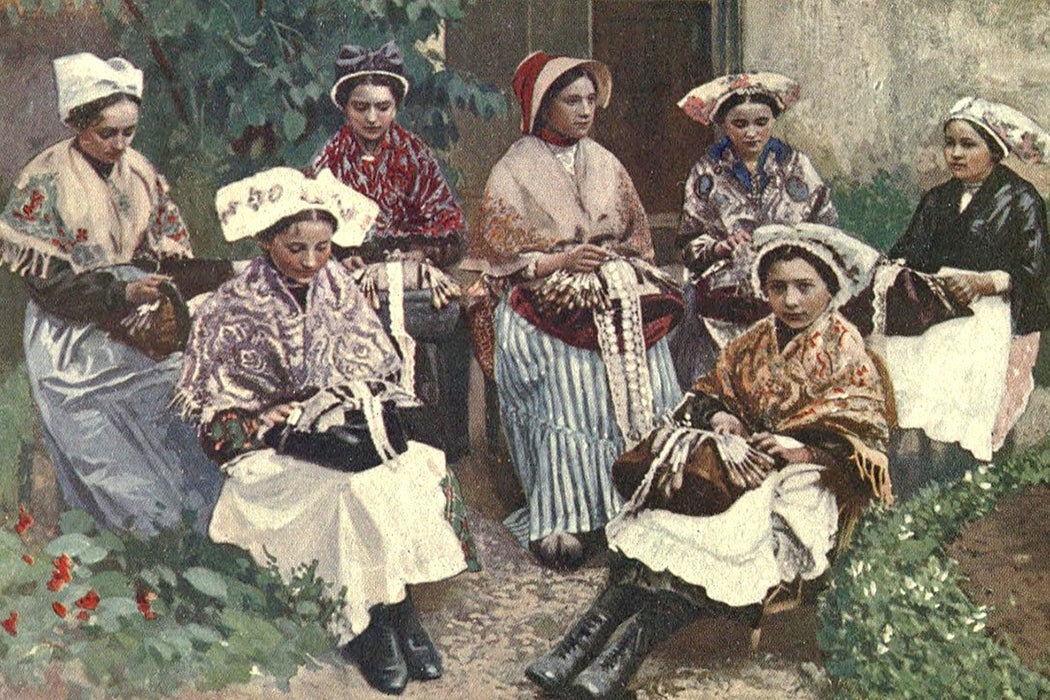Once upon a time, women wore lots of lace. Bonnets, petticoats, sleeves, beds—there was nary a surface lace didn’t touch during the Victorian age. But what did all that lace mean? Scholar Elaine Freedgood tells the story of how, in the face of encroaching industrialism, handmade lace enjoyed a frilly revival—and masked fears about the commodification of female labor.
Freedgood describes a lace war of sorts waged between machines and people. In 1768, the first lace machine was invented, and predictably enough automation drove lace prices down. Lace-making was historically women’s realm, but automation meant it could hypothetically be produced by men. Over time, it became almost impossible to tell handmade lace from machine-made. This prompted a crisis in the handmade lace industry, which turned to “lace books” to survive.
In the nineteenth century, these books described lace as something not just beautiful, but socially meaningful. Freedgood writes that they “helped their readers to imagine an alternative economy, one run by women working both by hand and at home that might form a bulwark—albeit a phantasmagoric one—against the moral, physical, and aesthetic depredations of industrialization.” Lace books found meaning in women making lace. The commercial nature of making lace by hand was obscured by these gendered pleas.
Irregularity in lace used to be the sign of an unskilled woman; in the industrial age, it became a sign that the lace was produced by a person, not a machine. Lace books taught readers how to distinguish handmade and machine-made lace, even including drawings of samples of both kinds to help readers along.
Romanticized accounts of lacemaking were important parts of these books. Lacemakers were presented not as grubby women laboring in dark cottages but as delicate, clean women with similarities to their upper-class sisters, who might make lace in their leisure time themselves. If women’s product—lace—was not valuable, the books implied, their labor was. “This,” writes Freedgood, “is sweated labor, then, without the sweat.”
Freedgood sees this upholding of handmade uniqueness as a response to the increasing march of mass production. Lace books implied that handwork might bring together the classes, connecting upper-class women with the less fortunate while giving lower-class women a way to uplift themselves by doing the “clean,” “artistic” work of their upper-class counterparts.
This charming utopia didn’t include accounts of the men who sold the lace, Freedgood notes, or acknowledge that women who made lace in English cottages did so at the behest of male employers who dictated what lace they should make and when.
Despite these incongruities, buying and wearing handmade lace became “a national cause” at the height of tensions over industry and national identity.
Of course, all things frilly and frothy must come to an end. Handmade lace eventually died in England—and went out of vogue. But thanks to Freedgood, we have a glimpse into the deeper meanings behind the trimming.







